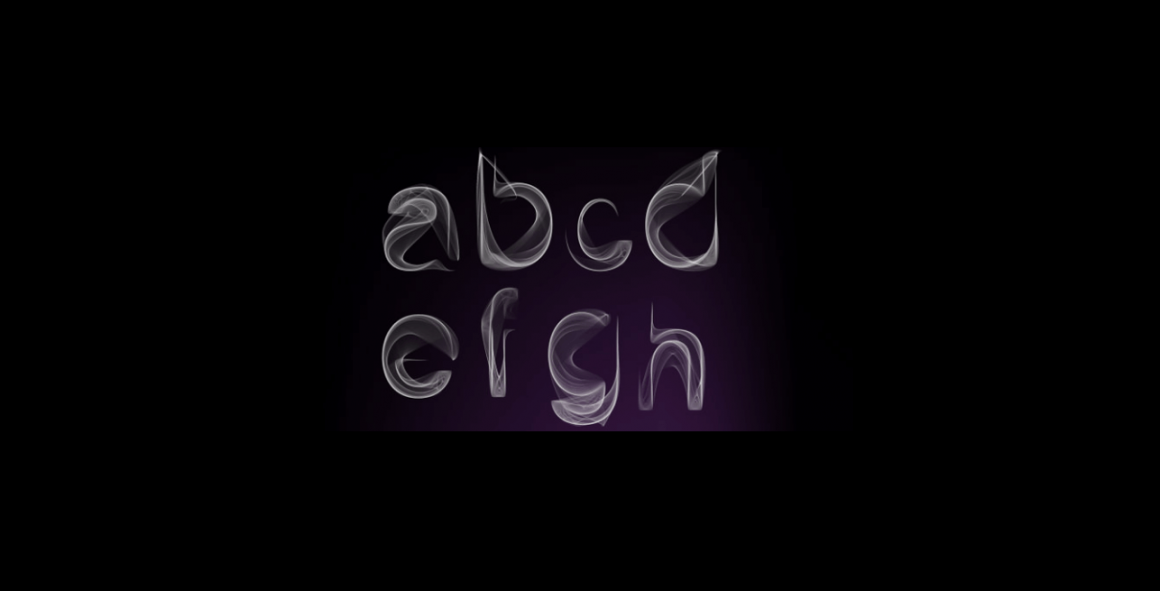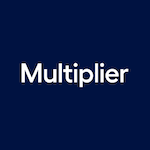Smoke fonts are typefaces designed to emulate the wispy, diffuse appearance of smoke. They create atmospheric, eerie, or ethereal text effects, often used in horror, fantasy, and mystical themed designs. Graphic designers, digital artists, and marketing professionals benefit from smoke fonts to enhance visual storytelling and create unique text visuals.
What Makes a Smoke Font Unique?
Understanding the Appeal of Smoke Fonts
Smoke fonts capture the essence of wispy, ephemeral smoke, bringing a sense of mystery and fluidity to text. Their appeal lies in their ability to evoke a specific atmosphere, making them a popular choice for designs that require an element of intrigue or drama. The unique visual texture of smoke fonts can transform ordinary text into something eye-catching and memorable.
The Smoky Aesthetic: Textured and Mysterious
The smoky aesthetic of these fonts is characterized by their intricate, flowing lines and gradients that mimic the natural movement of smoke. This textured appearance creates a sense of depth and motion, making the text appear almost alive.
The mysterious vibe of smoke fonts is perfect for projects related to magic, fantasy, or even horror themes, where an air of enigma and sophistication is desired.
How Smoke Fonts Stand Out in Design Projects
Smoke fonts stand out in design projects due to their distinct and unconventional appearance. They can be used to add a dramatic flair to posters, book covers, event invitations, and more.
When used sparingly and thoughtfully, smoke fonts can highlight key elements of a design without overwhelming the viewer. Their versatility allows them to complement a wide range of visual styles, from dark and moody to elegant and refined.
Incorporating smoke fonts into your design toolkit can provide a unique edge, helping your projects stand out in a crowded visual landscape. Whether you’re aiming to create a sense of mystery or simply want to add a touch of artistic flair, smoke fonts offer a compelling and versatile option for designers.
Top Picks for the Best Smoke Fonts of 2024
Reviewing the Leading Smoke Fonts
In 2024, the design world has seen a surge in creative and visually captivating smoke fonts. These fonts are not only trendy but also versatile, perfect for various design projects. Some of the leading smoke fonts this year include:
- Smoke Trail – Known for its intricate and realistic smoke effects, Smoke Trail is perfect for projects that require a dramatic and eye-catching font.
- Mystic Smoke – This font combines elegance with a smoky texture, making it ideal for invitations, book covers, and posters.
- Ethereal Mist – Ethereal Mist offers a softer, more subtle smoke effect, suitable for designs that need a touch of mystery without overwhelming the viewer.
- Vapor Script – A script font that blends cursive elegance with smoky details, perfect for creative and artistic designs.
Analyzing Bold and Elegant Smoke Fonts
Bold and elegant smoke fonts make a powerful statement in any design. These fonts are designed to stand out while maintaining a sense of sophistication:
- Phantom Smoke – A bold font with thick, smoky strokes that add depth and intrigue to headlines and titles.
- Smokey Royale – Combining regal elegance with a smoky effect, this font is perfect for upscale events and luxury brand designs.
- Veil of Mist – Elegant and refined, Veil of Mist offers a delicate smoke texture that enhances the overall aesthetic without overpowering the design.
Fonts That Capture the Smoky Essence: A Detailed Look
Fonts that capture the true essence of smoke go beyond mere texture; they embody the fluidity and ephemeral nature of smoke. Here’s a detailed look at some fonts that master this smoky essence:
- Ghostly Wisps – This font mimics the natural movement of smoke, with wispy lines that create a sense of motion and depth. Ideal for projects needing a touch of the supernatural.
- Fading Ember – Fading Ember offers a unique combination of smoky texture with subtle gradients, giving the text a glowing, ember-like appearance.
- Soot & Ash – Perfect for darker, more intense designs, Soot & Ash combines heavy, smoky strokes with a gritty texture, making it ideal for horror or thriller themes.
- Mystic Veil – With its delicate and intricate smoke patterns, Mystic Veil adds a layer of mystery and elegance, suitable for fantasy-themed projects and ethereal designs.
How to Download the Best Free Smoke Fonts
Where to Find Free Smoke Fonts Online
Finding high-quality smoke fonts for free can be a rewarding endeavor for designers on a budget. Here are some reliable sources where you can find free smoke fonts:
- Google Fonts – Although primarily known for standard fonts, occasionally hosts creative, free fonts including smoke styles.
- DaFont – A popular repository for free fonts, DaFont has a dedicated section for smoke fonts where you can browse and download a variety of options.
- FontSpace – Offers a wide range of free fonts, including unique smoke fonts created by various designers.
- 1001 Fonts – Another excellent resource for free fonts, with a diverse collection of smoke-themed fonts.
- Behance – Often, designers on Behance offer free downloads of their creative fonts as part of their portfolio showcases.
Steps for Downloading and Installing Smoke Fonts
Once you’ve found the perfect smoke font, follow these steps to download and install it:
Select and Download the Font:
- Go to the website where the font is hosted.
- Click the download button, usually found next to the font preview.
- Save the font file (usually in a .zip format) to your computer.
Extract the Font File:
- Locate the downloaded .zip file in your downloads folder.
- Right-click the file and select “Extract All” or use a file extraction tool to unzip the file.
Install the Font:
- Open the extracted folder to find the font files, typically in .ttf (TrueType) or .otf (OpenType) format.
- On Windows: Right-click the font file and select “Install.”
- On Mac: Double-click the font file to open it in the Font Book, then click “Install Font.”
Use the Font:
- Open your design software (e.g., Adobe Illustrator, Photoshop, or Microsoft Word).
- The newly installed font should now be available in your font list.
Legal Considerations for Using Free Smoke Fonts
When using free smoke fonts, it’s essential to be aware of the legal considerations to ensure you comply with usage rights:
- Check the License:
- Free fonts often come with different types of licenses. Some are free for personal use only, while others allow commercial use.
- Always read the license agreement provided with the font to understand the terms and conditions.
- Attribute the Creator:
- Some free fonts require attribution. If the license specifies this, ensure you give proper credit to the font creator in your project or its description.
- Avoid Redistribution:
- Most free font licenses do not allow redistribution. Do not share the font files with others; instead, direct them to the original download source.
- Commercial Use:
- If you plan to use the font for commercial purposes, double-check that the license permits this. If not, consider purchasing a commercial license or finding an alternative font that does.
Creative Uses for Smoke Fonts in Design
Incorporating Smoke Fonts in Logos and Branding
Smoke fonts can add a unique and memorable touch to logos and branding materials. Here’s how you can effectively incorporate them:
- Emphasize Mystique and Elegance: Use smoke fonts for brands that want to evoke a sense of mystery, sophistication, or luxury. This works particularly well for industries such as beauty, high-end fashion, and niche markets.
- Highlight Key Elements: Incorporate smoke fonts selectively, such as in the brand name or tagline, to draw attention without overwhelming the design. Balance the smoke font with cleaner, simpler fonts for other text elements.
- Create Visual Interest: Use smoke fonts to create distinctive logos that stand out. The flowing, ethereal nature of smoke fonts can make logos more dynamic and visually engaging, especially when paired with appropriate colors and graphics.
Smoke Fonts in Print and Web Projects
Smoke fonts can be effectively used in both print and web design projects to create striking visual effects. Here are some creative applications:
- Posters and Flyers: Smoke fonts are perfect for event posters and flyers, especially for concerts, theater performances, and parties. They add an atmospheric touch that can enhance the overall theme and mood.
- Book Covers: Use smoke fonts on book covers to create a sense of intrigue and allure. They are particularly well-suited for genres such as fantasy, mystery, and horror.
- Websites and Social Media: Integrate smoke fonts into website headers, banners, and social media graphics. They can add a dynamic element to online content, making it more engaging and shareable.
- Invitations and Greeting Cards: Smoke fonts can add a touch of elegance and uniqueness to invitations and greeting cards. Whether for weddings, birthdays, or special events, they can make the printed materials stand out.
Making Your Text Stand Out with Smoke Fonts
To make the most of smoke fonts and ensure your text stands out, consider the following tips:
- Use Contrast: Pair smoke fonts with contrasting backgrounds to enhance readability and visual impact. Dark smoke fonts on light backgrounds or vice versa can create a striking effect.
- Combine with Simple Fonts: To avoid overwhelming your design, combine smoke fonts with simple, clean fonts. This contrast can help highlight the smoke font while keeping the overall design balanced and readable.
- Apply Subtle Effects: Enhance the smoky appearance with subtle design effects such as gradients, shadows, or overlays. These effects can amplify the ethereal quality of the smoke font without distracting from the text.
- Limit Usage: Use smoke fonts sparingly to maintain their impact. Overusing them can dilute their effectiveness and make the design look cluttered. Reserve them for headings, logos, or key phrases to draw attention where it’s needed most.
Best Smoke Fonts by Style and Category
Exploring Font Styles: Bold, Italic, and More
Smoke fonts come in various styles, each adding a unique touch to your designs. Here’s a look at some popular styles:
- Bold Smoke Fonts: Perfect for making a strong statement, bold smoke fonts like Phantom Smoke and Soot & Ash are ideal for headlines, posters, and logos. Their thick, dramatic strokes draw attention and create a powerful visual impact.
- Italic Smoke Fonts: Adding a touch of elegance and dynamism, italic smoke fonts such as Vapor Script and Mystic Veil are great for invitations, book covers, and sophisticated branding. The slanted, flowing lines enhance the sense of movement and grace.
- Light and Thin Smoke Fonts: For a more delicate and airy feel, light smoke fonts like Ethereal Mist and Ghostly Wisps work well in designs that require subtlety and refinement. They are perfect for adding a gentle, ethereal quality to text.
Categorizing Smoke Fonts: From Fancy to Vintage
Smoke fonts can also be categorized based on their overall aesthetic, ranging from fancy and decorative to vintage and nostalgic:
- Fancy Smoke Fonts: These fonts, such as Mystic Smoke and Smokey Royale, are ornate and detailed, making them perfect for luxury brands, event invitations, and decorative projects. They often feature intricate smoke patterns and embellishments.
- Vintage Smoke Fonts: Fonts like Fading Ember and Veil of Mist offer a nostalgic, old-world charm with their smoky, distressed appearance. They are ideal for retro-themed designs, vintage posters, and classic book covers.
- Modern Smoke Fonts: For a contemporary and sleek look, modern smoke fonts such as Smoke Trail and Soot & Ash blend clean lines with smoky effects. These fonts are versatile and can be used in a variety of projects, from tech branding to cutting-edge advertisements.
Selecting Fonts for Different Design Purposes
Choosing the right smoke font for your design depends on the project’s goals and the desired aesthetic. Here are some tips for selecting fonts based on different design purposes:
- Branding and Logos: For branding and logos, select bold or fancy smoke fonts that can create a memorable impact. Ensure the font aligns with the brand’s personality and values. Phantom Smoke or Mystic Smoke can add a distinctive touch to your brand identity.
- Print Materials: When designing print materials like posters, flyers, and book covers, consider the readability and visual appeal of the font. Bold fonts like Soot & Ash are great for headlines, while lighter fonts like Ethereal Mist can be used for supporting text.
- Digital Media: For websites, social media graphics, and digital ads, choose smoke fonts that stand out on screen and are easy to read. Modern fonts like Smoke Trail are perfect for digital use, providing a clean yet intriguing look.
- Event Invitations: For invitations to weddings, parties, or special events, opt for elegant and decorative smoke fonts such as Mystic Veil or Smokey Royale. These fonts add a touch of sophistication and excitement to the invitations.
Designer Tips for Using Smoke Fonts
Choosing the Right Smoke Font for Your Project
Selecting the appropriate smoke font for your project is crucial to achieving the desired impact. Here are some tips to help you make the right choice:
- Understand Your Project’s Theme: Consider the overall theme and mood of your project. For a mysterious and elegant theme, fonts like Mystic Smoke are ideal. For a bold and dramatic effect, go with Phantom Smoke.
- Consider Readability: Ensure the font is readable at various sizes. While smoke fonts can be intricate, they should still be legible. Ethereal Mist offers a balance between aesthetic appeal and readability.
- Match the Font with Your Message: The font should complement the message you’re conveying. For instance, a playful event invitation might benefit from a whimsical font like Ghostly Wisps, while a serious book cover might need a more intense font like Soot & Ash.
- Test in Context: Always test the font in the context of your design to see how it interacts with other elements and backgrounds. This ensures the font enhances rather than detracts from the overall design.
Combining Smoke Fonts with Other Font Styles
Integrating smoke fonts with other font styles can create a dynamic and visually appealing design. Here’s how to do it effectively:
- Pair with Simple Fonts: Combine smoke fonts with clean, simple fonts to maintain balance. For example, use Smoke Trail for headings and a simple sans-serif font for body text. This contrast helps highlight the smoke font without overwhelming the design.
- Use Hierarchy: Establish a visual hierarchy by using smoke fonts for key elements like titles or quotes and simpler fonts for supporting text. This guides the viewer’s eye through the design.
- Maintain Consistency: Ensure the fonts you pair together complement each other in terms of style and tone. Avoid combining too many decorative fonts, as this can create a cluttered and confusing design.
- Experiment with Sizes and Weights: Play with different sizes and weights to create emphasis and interest. A bold smoke font like Soot & Ash can be paired with a light sans-serif font to create a striking contrast.
Common Mistakes to Avoid When Using Smoke Fonts
To make the most of smoke fonts, avoid these common mistakes:
- Overuse: Using smoke fonts excessively can make your design look cluttered and chaotic. Reserve smoke fonts for key elements to maintain their impact.
- Ignoring Readability: Prioritize readability, especially for longer texts. Intricate smoke fonts can be hard to read in large blocks of text. Use them sparingly and for short, impactful text.
- Poor Color Choices: Ensure there is enough contrast between the smoke font and the background. Light smoke fonts on light backgrounds or dark fonts on dark backgrounds can be hard to read. Experiment with colors to find the best combination.
- Neglecting Font Size: Smoke fonts can lose their effect if they’re too small. Ensure the font size is appropriate for the medium and maintains the visual appeal of the smoke effect.
- Inconsistent Style: Avoid mixing smoke fonts with too many other decorative fonts. Stick to a consistent style throughout your design to maintain a cohesive look.
Exploring the Future of Smoke Fonts
Trends to Watch in 2024
As we move further into 2024, several trends are emerging in the world of smoke fonts. These trends are shaping how designers use these unique and captivating typefaces to create memorable and innovative designs. Here’s a look at some of the most exciting trends to watch this year:
Increased Realism and Detail:
- Hyper-Realistic Smoke Effects: Designers are pushing the boundaries with hyper-realistic smoke effects that mimic the intricate details and fluidity of real smoke. Expect to see fonts that feature delicate wisps, intricate curls, and dynamic movements.
- Layered and Textured Smoke: Smoke fonts with layered textures and varying opacity levels are becoming popular, adding depth and dimension to text. These fonts create a more immersive and engaging visual experience.
Interactive and Animated Fonts:
- Animated Smoke Fonts: With advancements in web technologies, animated smoke fonts are becoming a trend. These fonts can feature moving smoke effects, adding a dynamic and interactive element to websites and digital media.
- Interactive Typography: Interactive smoke fonts that respond to user actions, such as hovering or clicking, are gaining traction. This trend enhances user engagement and makes designs more interactive and enjoyable.
Combining Smoke with Other Elements:
- Mixed Media Fonts: Smoke fonts are being combined with other design elements like fire, water, and light to create hybrid effects. These combinations result in visually striking and innovative typography.
- Integration with Graphics: Designers are integrating smoke fonts with graphics and illustrations, creating cohesive and thematic compositions. This trend is particularly popular in poster design, album covers, and event promotions.
Eco-Friendly and Sustainable Themes:
- Natural and Organic Designs: As the focus on sustainability grows, smoke fonts are being used in designs that emphasize natural and organic themes. Fonts that mimic the look of smoke from incense, campfires, or natural sources are trending.
- Minimalist Smoke Effects: Eco-friendly and minimalist design trends are leading to smoke fonts with subtle and understated effects. These fonts are elegant and refined, suitable for brands and projects with a focus on simplicity and sustainability.
Personalization and Customization:
- Custom Smoke Fonts: The demand for personalized and unique typography is rising. Custom smoke fonts tailored to specific brands or projects are becoming more common, allowing for a distinct and memorable visual identity.
- Variable Fonts: Variable smoke fonts that allow designers to adjust the intensity and style of the smoke effect are gaining popularity. These fonts offer flexibility and creative control, enabling more tailored and dynamic designs.
Cultural and Artistic Inspirations:
- Cultural Influences: Smoke fonts inspired by different cultures and artistic styles are emerging. Fonts that draw from traditional art forms, such as calligraphy or indigenous smoke signals, add a unique and culturally rich element to designs.
- Artistic Collaborations: Collaborations between font designers and artists are leading to the creation of innovative smoke fonts that blend artistic expression with typographic design. These fonts often feature hand-drawn smoke effects and artistic flourishes.
Innovative Smoke Fonts Entering the Market
As smoke fonts continue to captivate designers, several innovative fonts have recently entered the market, pushing the boundaries of typography and offering fresh, creative options:
- Nebula Swirls: This font features ethereal, nebula-like smoke patterns that are perfect for sci-fi and fantasy-themed projects. Its intricate swirls and gradients create a mesmerizing effect.
- Vortex Vapor: Combining sharp, angular strokes with soft, smoky edges, Vortex Vapor adds a dynamic, edgy feel to any design. It’s ideal for modern, high-energy projects such as tech branding and event posters.
- Eclipse Mist: Eclipse Mist offers a blend of bold, dark strokes with light, airy smoke effects. This contrast makes it versatile for both print and digital media, especially for brands that want to convey mystery and sophistication.
- Solar Flare: Inspired by solar phenomena, Solar Flare integrates fiery, radiant elements with smoky textures, creating a unique and powerful font. It’s perfect for dramatic headlines and impactful visuals.
- Twilight Haze: This font features soft, diffused smoke effects reminiscent of twilight mist. It’s excellent for romantic, dreamy designs such as wedding invitations and book covers.
- Phoenix Ash: Combining the aesthetics of fire and smoke, Phoenix Ash offers a dramatic, intense look that works well for bold branding and thematic designs related to rebirth or transformation.
The Evolution of Smoke Fonts in Graphic Design
Smoke fonts have undergone significant evolution in graphic design, reflecting changes in technology, aesthetics, and design philosophies:
Early Beginnings
- Basic Effects: Initially, smoke fonts were simple, often created using basic gradients and shadows to mimic the look of smoke. These early versions lacked the intricate details and realism seen today.
- Limited Usage: Due to their simplicity, early smoke fonts were primarily used in niche projects, such as fantasy book covers and themed event posters.
Technological Advancements
- Improved Software: With the advent of advanced graphic design software like Adobe Illustrator and Photoshop, designers gained more tools to create realistic smoke effects. Techniques such as blending modes, masks, and custom brushes allowed for more detailed and dynamic smoke fonts.
- Digital Animation: The integration of animation software enabled the creation of animated smoke fonts, enhancing their use in digital media and web design.
Design Trends
- Realism and Detail: As realism became a significant trend in design, smoke fonts evolved to incorporate more detailed and natural-looking smoke effects. Fonts like Nebula Swirls and Eclipse Mist exemplify this shift towards hyper-realistic textures.
- Hybrid Styles: Combining smoke effects with other design elements (e.g., fire, light) became popular, leading to hybrid fonts that offer unique visual experiences. Phoenix Ash and Solar Flare are prime examples of this trend.
Customization and Flexibility
- Variable Fonts: The introduction of variable fonts allowed for greater customization, enabling designers to adjust the intensity and style of smoke effects within a single font. This flexibility has made smoke fonts more adaptable to various design contexts.
- Custom Creations: Increased demand for personalized branding has led to the rise of custom smoke fonts tailored to specific brand identities, enhancing the uniqueness and memorability of designs.
Sustainability and Minimalism
- Eco-Friendly Designs: As sustainability became a focus, smoke fonts started to reflect more natural and organic smoke effects, aligning with eco-friendly and minimalist design trends. Twilight Haze and Eclipse Mist cater to these themes with their soft, understated effects.
Cultural and Artistic Influences
- Global Inspirations: Smoke fonts now draw inspiration from diverse cultural and artistic traditions, integrating elements such as traditional calligraphy and indigenous smoke signals. This has broadened the scope and appeal of smoke fonts in global design contexts.
The evolution of smoke fonts in graphic design showcases their growing complexity, versatility, and appeal. From simple beginnings to sophisticated, customizable typefaces, smoke fonts have become a vital tool for designers seeking to add depth, drama, and elegance to their work.









